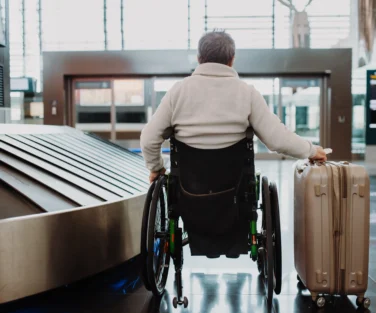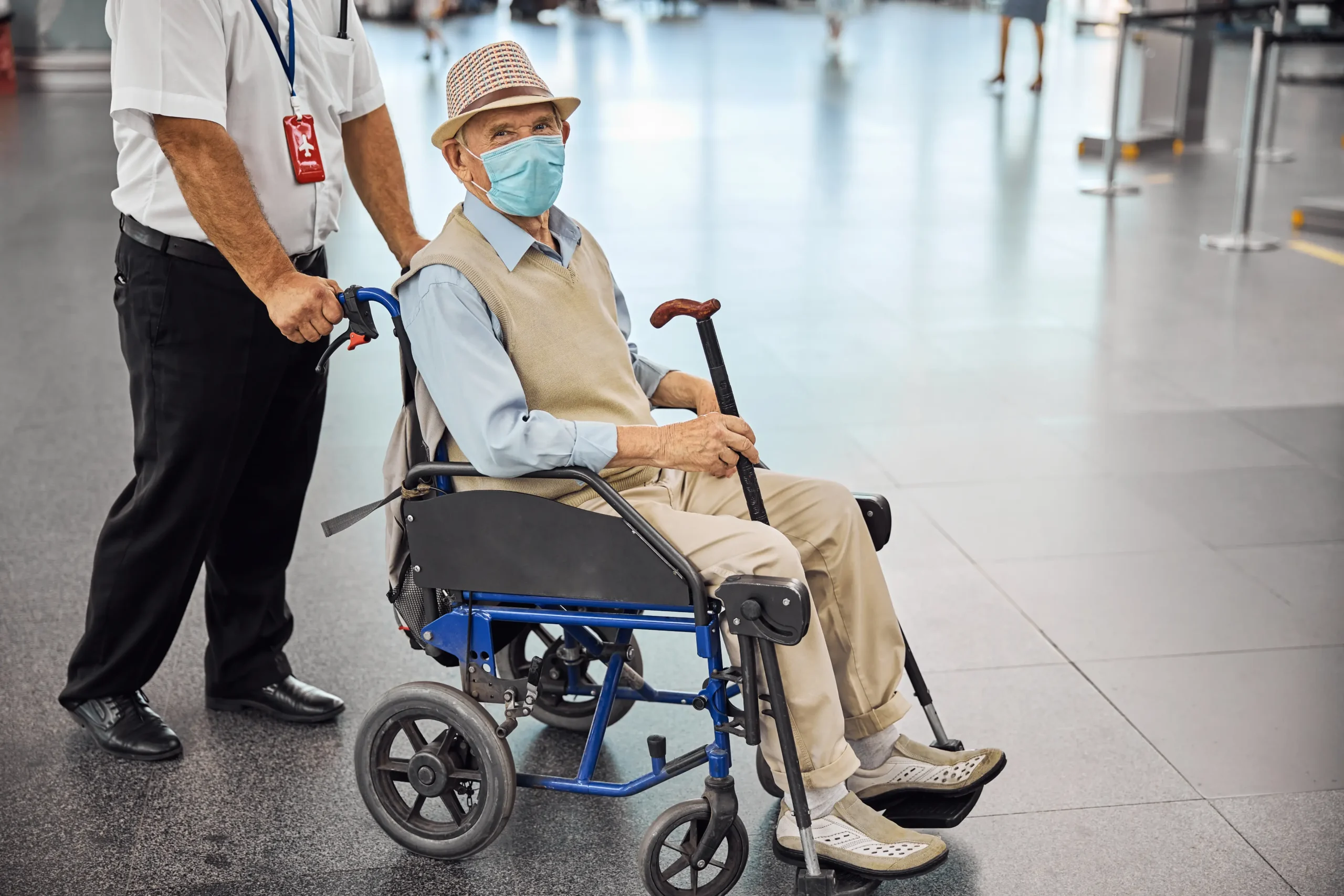
Challenges of Airport Travel the Disabled Must Face
Traveling is a wonderful way to spend free time, but individuals with disabilities often face challenges. Common issues include navigating crowded terminals and limited availability of trained staff assistance. What’s more, inadequate signage and inaccessible restrooms lead to anxiety and fatigue.
Airports offer various amenities for individuals with reduced mobility or sight impairments. Accessibility is crucial for all passengers to travel with ease and comfort. It includes providing inclusive access to essential services and reducing barriers. Airports should create a welcoming environment for smoother, stress-free journeys.
Innovative Solutions for Airport Accessibility
Innovations in airport technology are revolutionizing travel for passengers with disabilities. By integrating new advancements, airports ensure consistent service quality and address diverse needs. These developments benefit airports by streamlining airline operations and also enable passengers to navigate terminals with ease and confidence.
Advanced Mobility Solutions
One way to provide greater airport accessibility assistance is by introducing advanced solutions. Automated mobility aids, provided free of charge, such as electronic wheelchairs and scooters, allow handicapped passengers to move smoothly through the terminals.
Additionally, smart navigation systems can assist visually impaired travelers, using real-time data and auditory cues to guide them safely through the airport. These innovations collectively improve the travel experience and ease formalities.
Enhanced Communication Tools
Effective communication tools are crucial for smooth airport operations. Major hubs offer mobile apps that provide real-time maps, helping disabled travelers navigate the terminals. They often utilize augmented reality, overlaying images onto the real world.
Another way to improve accessibility is to make the airport announcements in different languages and provide multi-language support. It’s crucial to offer free assistance of a sign language interpreter to overcome communication gaps. Everyone should have equal access to information.
Streamlined Security Processes
Over the past few years, airports have been reshaping their accessibility with improvements in TSA. Dedicated lanes for travelers with disabilities streamline the process, reducing waiting times.
Implementing biometric screening benefits travelers by speeding up identity checks, which saves passengers valuable time during their airport journey. While waiting in lines at airports, stay mindful of disabled travelers to make their experience more comfortable.

Accessible Design and Infrastructure
Inclusive airport design is crucial for accommodating travelers with disabilities. Major hubs, such as Heathrow Airport (LRH) and Sydney Airport (SYD), feature well-designed environments for individuals with mobility challenges. In the accessibility technology trials, they usually rank one of the best.
Although it may seem obvious that infrastructure features like ramps, lifts, and restrooms should be easily accessible, in practice, it’s not always the case. Designers must remember to make terminals available for all. For example, by working closely with the wheelchair-user community, they can improve accessibility and ensure a seamless travel experience for everyone.
Inclusive Lounge Experiences
In situations of delayed flights and long layovers, we recommend using the airport lounge service. This feature caters to the needs of all travelers, including free meals, quiet waiting rooms, and private restrooms. There, passengers can request accessibility assistance anytime.
If you want to book the lounge access, make the reservation online. You don’t need to navigate multiple websites of particular airports, as you can find all the crucial information here. Simply use the search bar to find your departure and arrival airports.
Fast Track Assistance Services
You can buy fast track services to streamline the airport experience. Travelers with disabilities receive prioritized passenger assistance, including expedited security checks. It minimizes waiting time and reduces stress, ensuring a smoother and more comfortable journey.
Enhanced airport assistance for disabled travelers also includes a dedicated agent to help with navigation and boarding. This can significantly facilitate formalities and be of great help to those requiring support. You can book the fast track service for your travel via our website.
Frequently Asked Questions (FAQ)
Are there specific apps that can help me navigate airports easily?
Yes, several apps can assist with airport navigation. You should check out Aira, which provides real-time visual assistance on demand. Lazarillo is designed for visually impaired users. And FlightAware offers concise flight information.
What should I do if I need assistance at the security checkpoint?
If you need assistance at a security checkpoint, inform the TSA agent immediately. They can provide guidance, expedite screening, and accommodate mobility devices. Don’t hesitate to request a private screening.
Are there any additional costs for using advanced accessibility services?
Accessibility services at airports, such as wheelchair assistance and visual help apps, are free. Some premium services may require fees. Always check with airports and airlines for specific cost details.
Can I access premium lounges with my disability?
Yes, passengers with disabilities and passengers requiring assistance can access airport lounges. To use this premium service, they need proof of purchase. Make the reservation for your trip via our website.
What future innovations are expected in air travel accessibility?
Future innovations may include robots powered by artificial intelligence and smart devices for seamless communication. Biometric identification and automated check-ins will streamline travel. Virtual reality training for staff will improve the overall support for disabled passengers.

